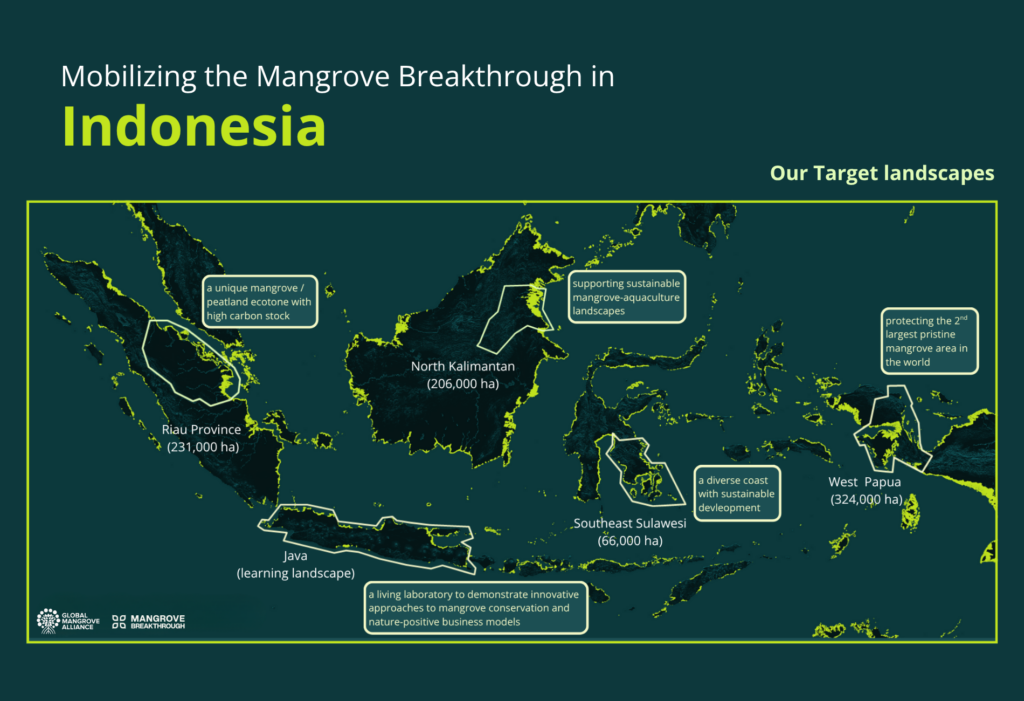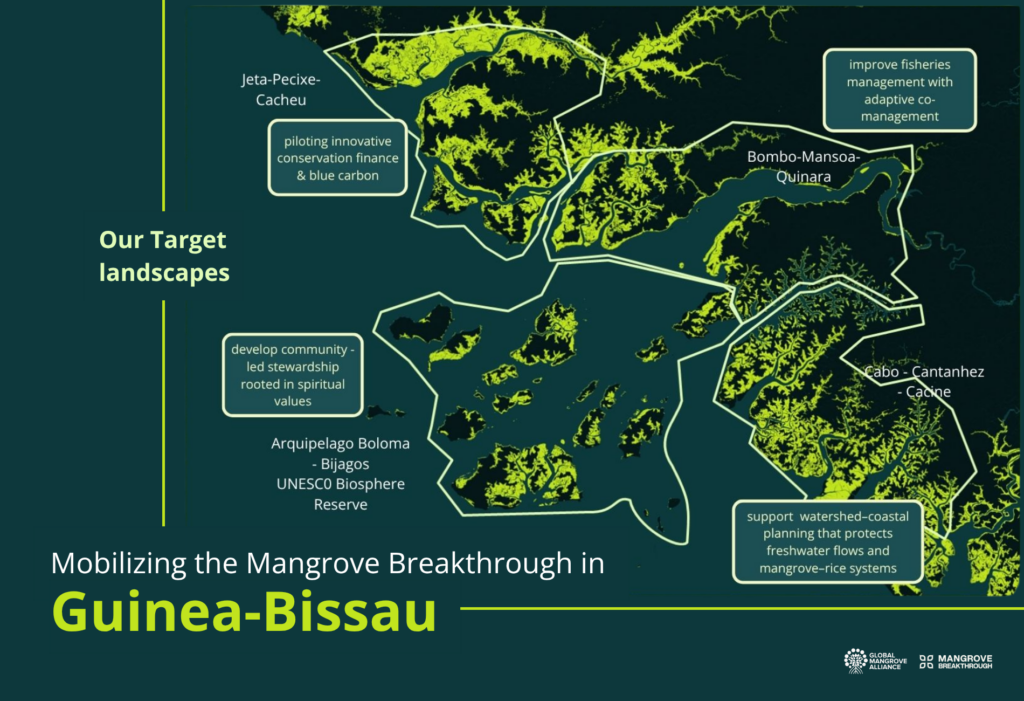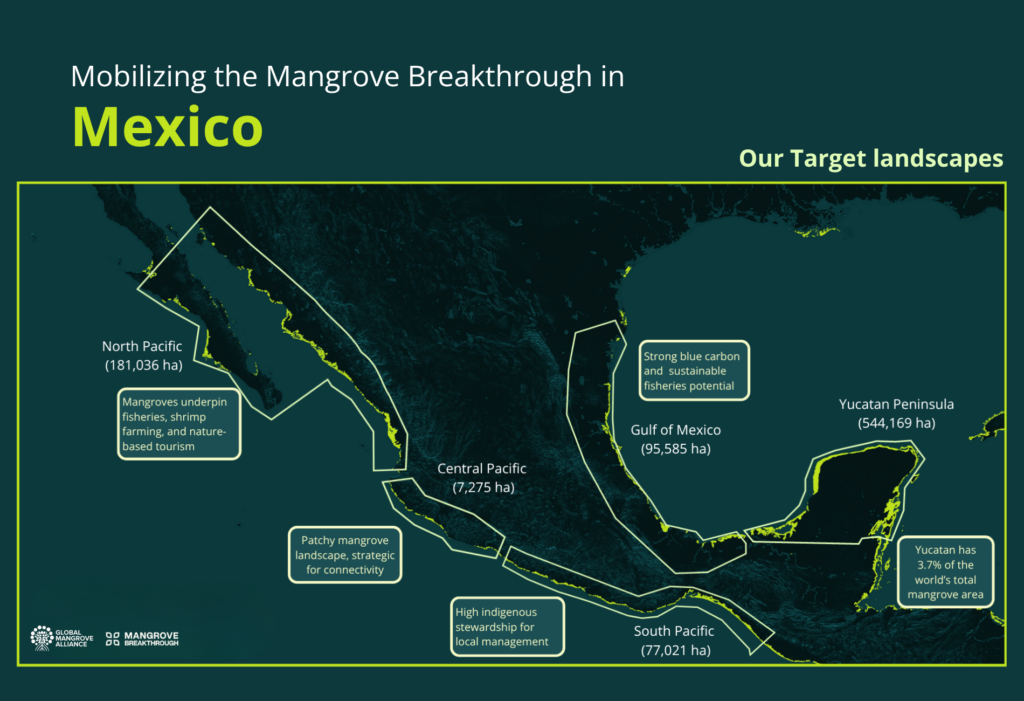
Reflections from UNOC & BEFF 2025
This June, Wetlands International joined thousands of delegates, leaders, and ocean advocates in the global marine and coastal community for two of the most significant gatherings of the year — the UN Ocean Conference (UNOC) in Nice and the Blue Economy and Finance Forum (BEFF) in Monaco.
At both conferences, there was a tangible shift in focus. Coastal wetlands — mangroves, saltmarshes, coral reefs and seagrasses — are no longer being perceived as peripheral to climate and biodiversity efforts. Their roles as critical carbon sinks, biodiversity havens, and buffers against the worsening impacts of our changing climate were recognised in plenaries, pavilions, and policy conversations.
A Breakthrough for Mangroves
Momentum around the Mangrove Breakthrough was undeniable. The initiative, anchored by the UN High-Level Champions and the Global Mangrove Alliance and supported by a broad coalition of governments, financial institutions, NGO’s, local community groups and private sector partners, aims to secure the protection and restoration of 15 million hectares of mangroves by 2030. At UNOC, the Mangrove Breakthrough was endorsed by Brazil, whose Minister for the Environment formally announced support during the conference. This marked a significant step forward and reinforced the ocean-climate connection as a priority ahead of COP30 in Belém.
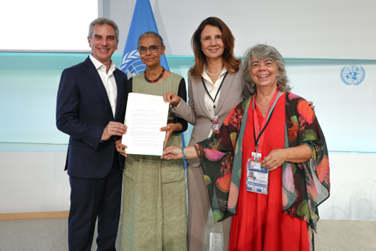
In Monaco, the Mangrove Breakthrough also announced its Mangrove Finance Facility (MFF) to accelerate large-scale, long-term investment in mangrove protection and restoration. Its first step is to launch a regional bond series and Technical Assistance (TA) facility using blended finance across Southeast Asia, Latin America, and Africa.
In Nice, the Global Mangrove Alliance presented initial drafts of its first three country propositions for bold mangrove action in Mexico, Indonesia, and Guinea-Bissau, for consideration by potential contributors to deliver the Breakthrough.
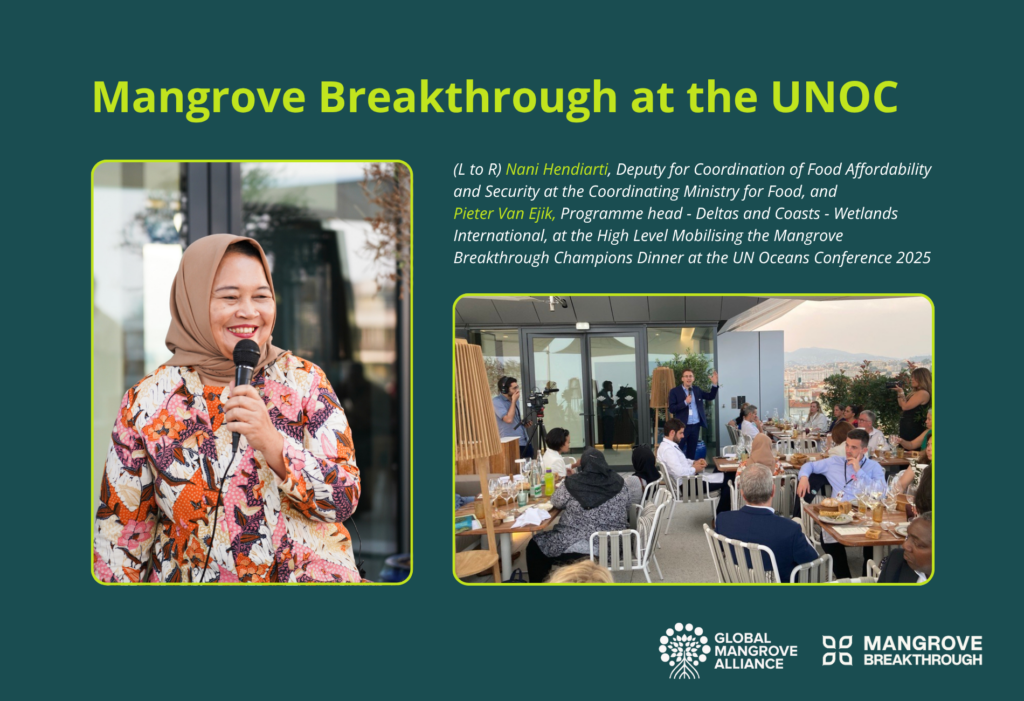
These blueprints, created with national and local partners, provide joined-up plans to scale mangrove conservation and restoration, improve policies, and attract long-term investment. They move beyond scattered projects toward coordinated, country-led efforts that connect science, governance, and finance.
A slideshow with 3 images
The slider is set to loop infinitely.
Restoring nature by restoring ecological conditions
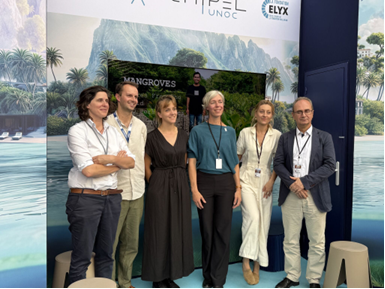
A key moment for Wetlands International came at the event “Mangroves, a solution for climate adaptation: NGO perspectives,” where our Deltas and Coasts Communications and Advocacy Lead, Susanna Tol, shared the Community-based Ecological Mangrove Restoration (CBEMR) approach, which challenges the conventional model of mass-planting mangroves as a solution to eroded coastlines. This approach, widely embraced by mangrove experts at the first International Mangrove Restoration Conference, advocates instead for restoring the natural hydrological and ecological conditions that allow mangrove forests to regenerate and thrive naturally. A strong community involvement is at the heart of the approach, ensuring local knowledge and capacity drive long-term success.
Saltmarshes in the global spotlight
This year marked the celebration of World Saltmarsh Day on June 11th, giving these wetlands their long-overdue attention. The launch of the first-ever State of the World’s Saltmarshes report marked a historic milestone for these tidal ecosystems. Published by WWF-UK and co-authored by nearly 100 global experts, the report captures both the urgency and the opportunity facing saltmarsh conservation today.
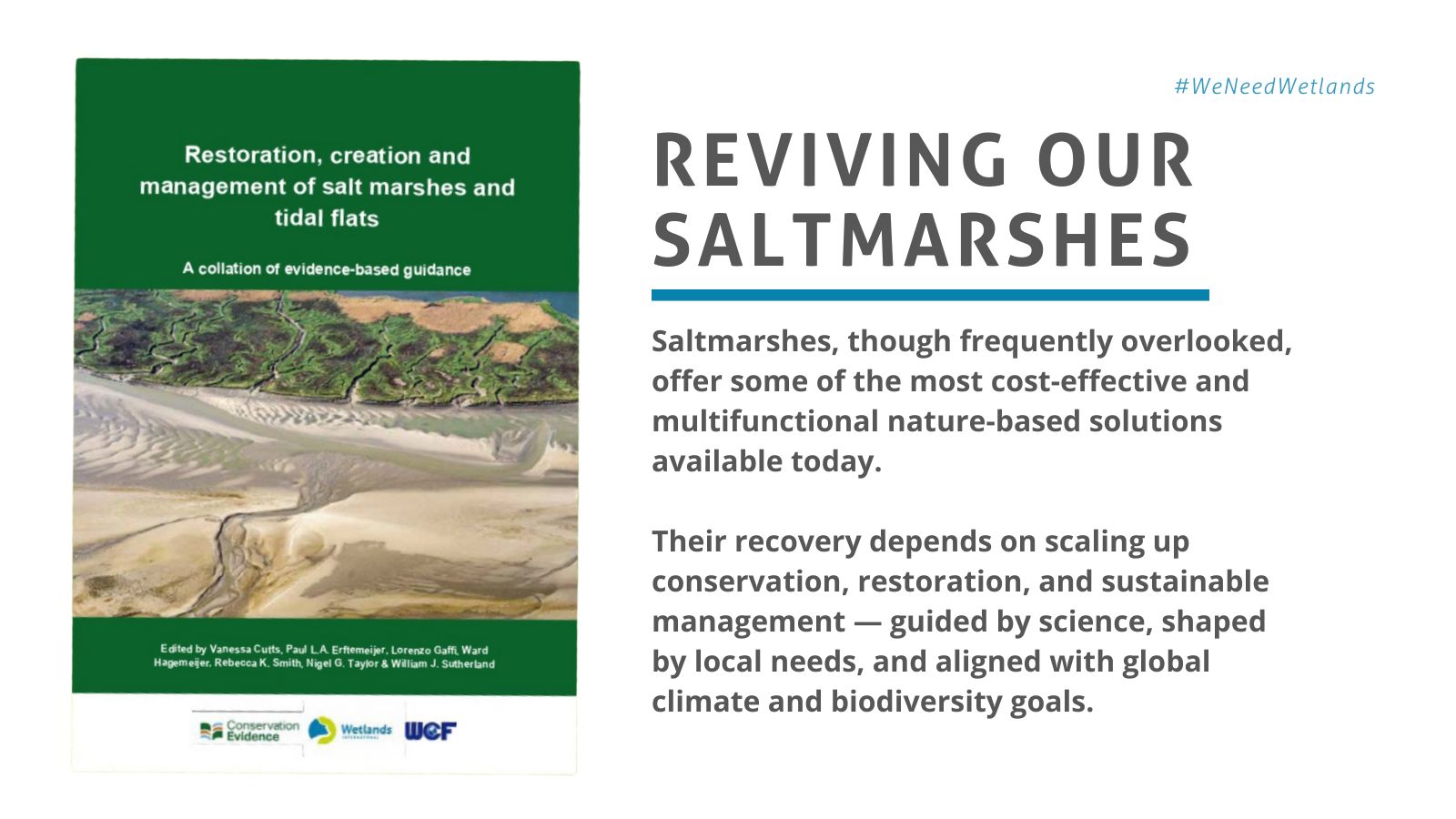
Wetlands International, in collaboration with the Conservation Evidence Group at the University of Cambridge, contributed significantly to Section 4 of the report that focuses on scaling solutions. This section builds on our landmark guidelines for the ‘Restoration, Creation, and Management of Saltmarshes and Tidal Flats’. The inclusion of saltmarshes in the broader blue carbon and climate adaptation agenda is an encouraging sign that integrated coastal action is finally gaining the prominence it deserves.
Ecosystems as Climate Infrastructure
Throughout UNOC and BEFF, the position of coastal wetlands as “climate infrastructure” was echoed across discussions on adaptation, resilience, and nature-based solutions.
In a high-level event hosted by the German Government, WWF, GIZ, and the Blue Action Fund, our Partnerships Manager, Paul Mbatia, joined speakers in highlighting the role of coastal wetland ecosystems as “Coastal Climate Heroes.” The conversation explored real-world examples of how mangroves, saltmarshes, and seagrasses deliver mitigation, adaptation, and livelihood benefits, while also addressing the barriers to scaling these efforts. The discussion emphasised the need for cross-sector collaboration to move from pilot projects to systemic solutions and leadership of Indigenous Peoples and Local Communities (IPLCs).
Making the Blue Economy a reality for communities
Another key focus was aligning blue economy ambitions with credible, community-driven approaches. At the Blue Economy and Finance Forum in Monaco, our Programme Head for Deltas and Coasts, Pieter van Eijk, spoke at a session on financing the future of coastal communities – Scaling Solutions for Sustainable Fisheries and Aquaculture. He shared experiences from sustainable mangrove-aquaculture models piloted by Wetlands International and its partners in Indonesia and the Philippines that balance economic opportunity with ecological health and coastal protection, pointing to pathways that deliver livelihoods without compromising long-term resilience. These conversations reinforced the importance of working across scales and sectors to ensure lasting impacts.
The Road to Belém
Looking ahead to COP30, set to take place in Belém, Brazil, the ocean-climate agenda is gaining shape. Wetlands International is committed to ensuring that community knowledge, local capacity, and evidence-based practice remain at the centre of every breakthrough.

